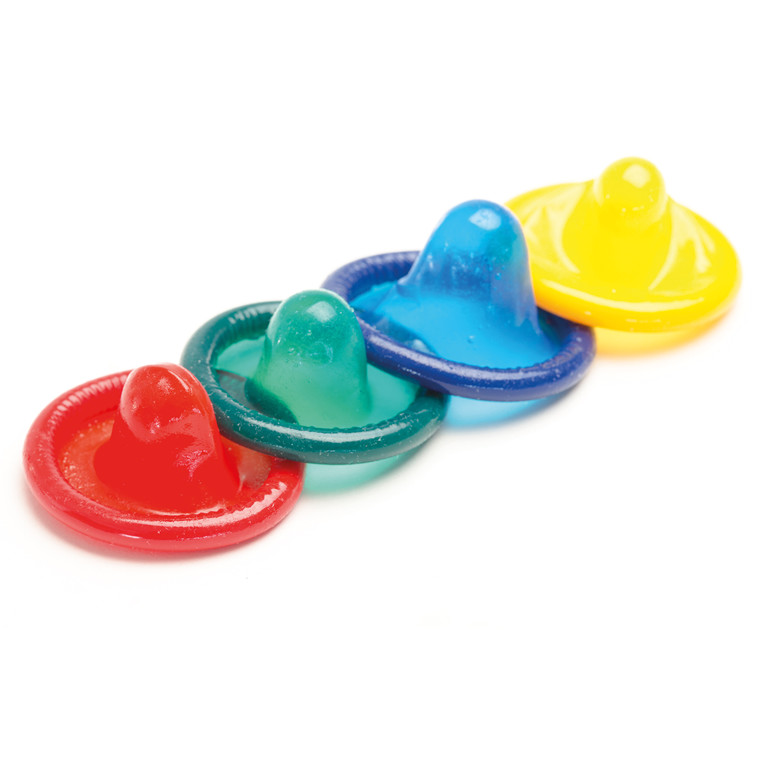
There are two different types of condoms, condoms which are worn on the penis, and condoms which are worn inside the vagina.
Condoms are made from a very thin latex, synthetic nitrile, polyisoprene or polyurethane, and can be used for vaginal, oral and anal sex.
The size and fit of condoms on a penis is important so that they are comfortable and don't break or slip off.
Condoms are the only option that prevents pregnancy and STIs.
Positives
- Easy to get - often free through clinics or condom schemes
- Available without the need to see a doctor, nurse or healthcare professional
- Protection against most STIs
- Gives people control over whether and when to have a baby
- Sex is easier to clean up after
Negatives
- Condoms can interrupt sex
- Condoms can reduce pleasure
- It can be difficult to negotiate using condoms
- Some feel anxious about keeping an erection
- Condoms need some skill - knowing how to stop condoms breaking or slipping off
If condoms break or slip off there’s usually a reason
Condoms can break because they come into contact with things like oil-based lubricants, vaginal medications, sharp fingernails, teeth, or jewellery. Using a water-based lubricant is important and can help prevent condoms breaking, particularly during anal sex.
If condoms are too small they can break. There are many different sizes and brands to suit different penis length and thickness.
If a condom is too loose it can slip off. After ejaculation, it's important to hold the condom down at the base of the penis while taking the penis out.
If a condom breaks or comes off, emergency contraception might be needed
The morning after pill (emergency contraception) can be bought from pharmacies. GP surgeries, family planning clinics and sexual health clinics can also provide the emergency copper coil and morning after pills.
Condoms have expiry dates. They can also weaken in different conditions, such as in hot places or in sunlight.
Two is not better than one- doubling up and using two condoms at the same time actually increases the chances of the condoms breaking.
A new condom needs to be used each time, and right from the beginning of penetrative sex, because pre-come can contain sperm.
Condom problems
It’s not one size fits all – there are different varieties and sizes of condoms. Condoms can feel too loose or too tight, which can be less pleasurable. Choosing the right size of condom can help.
Some people lose their erection when a condom is first put on – being sexual without penetration can allow time to get hard again. The right size of condom will also help, and practising being slick about using them.
If condoms are causing a sore vagina, using a small amount of water-based lubricant in the vagina can help.
Some people are allergic to latex, and get soreness or a rash. Non-latex condoms are available.
Good to know
The size and fit of condoms on a penis matters a lot. Too tight and they break, too loose and they slip off. The right fit makes a difference to pleasure.
You can also use a dental dam - this is a special type of condom that can be used to cover the vulva or anus during oral sex to protect against STIs
How much effort are condoms?
Condoms are simple in theory but complicated in practice.
It can be hard to use condoms in the heat of the moment, and they can affect sexual pleasure.
Condoms can be quite a lot of effort: having them available, communicating about using them, putting them on correctly (with no air inside), and making sure they stay on or in when pulling out.
Some people find that putting on a condom interrupts sex.
If a condom breaks or comes off, emergency contraception might be needed (the emergency pill or IUD)
How effective are condoms?
It depends. When used every single time, and with no problems, condoms are about 98% effective – meaning that if 100 people used condoms for a year for preventing pregnancy, about 2 of them will have an unplanned pregnancy. However, allowing for the ups and downs of life, the average user can expect them to be around 82% effective – meaning that if 100 people used condoms for a year, about 18 of them will have an unplanned pregnancy.
Internal (vaginal) condoms are about 95% effective – meaning that if 100 people used internal condoms for a year, about 5 of them will have an unplanned pregnancy. However, the average user can expect them to be around 79% effective – meaning that if 100 people used internal condoms for a year, about 21 will have an unplanned pregnancy.
How do they work?
Simple concept - condoms stop sperm from getting inside the vagina and travelling up to fertilise an egg. Find out more about how pregnancy happens here
